
Turkish Journal of Pathology
Scope & Guideline
A Vital Resource for Pathology Professionals Worldwide
Introduction
Aims and Scopes
- Pathological Mechanisms and Disease Correlation:
The journal extensively covers studies that explore the pathological mechanisms underlying various diseases, correlating histopathological findings with clinical outcomes. This includes detailed investigations into tumor microenvironments, histological features, and their implications for diagnosis and treatment. - Innovations in Diagnostic Techniques:
Research focusing on the development and validation of novel diagnostic techniques, including immunohistochemistry, molecular pathology, and artificial intelligence applications in pathology. This reflects the journal's commitment to enhancing diagnostic accuracy and efficiency in clinical practice. - Clinical Case Studies and Reviews:
The publication frequently features case reports and literature reviews that provide in-depth insights into unique or challenging cases, enhancing the understanding of rare diseases and their pathological characteristics. - Epidemiological Studies and Trends:
The journal includes epidemiological studies that assess the prevalence, risk factors, and outcomes of various diseases, contributing to the broader understanding of public health issues related to pathology. - Educational Aspects of Pathology:
There is a focus on pathology education, addressing the challenges and developments in pathology training and medical education, which is crucial for the future of the discipline.
Trending and Emerging
- Integration of Artificial Intelligence in Pathology:
The use of artificial intelligence and machine learning algorithms in pathology is gaining traction, with studies exploring their utility in diagnostic processes and data extraction. This trend highlights a significant technological advancement that could transform pathology practices. - Focus on Tumor Microenvironment and Immunology:
There is an increasing emphasis on understanding the tumor microenvironment, including immune responses and stromal interactions. This trend is crucial for developing personalized treatment strategies and understanding tumor behavior. - Molecular Pathology and Genetic Insights:
Research that delves into molecular pathology, including genetic mutations and their implications for cancer prognosis and treatment, is becoming more prevalent. This reflects a broader trend towards precision medicine in oncology. - Case Reports on Rare Tumors and Entities:
A notable trend in recent publications is the detailed exploration of rare tumors and unusual pathological entities, offering valuable insights into their clinical and histopathological characteristics, which are often underrepresented in the literature. - Impact of COVID-19 on Pathology Practices:
Studies examining the effects of the COVID-19 pandemic on pathology practices, including changes in training programs and diagnostic approaches, are emerging as a relevant theme, reflecting the pandemic's significant influence on the field.
Declining or Waning
- Traditional Histopathological Techniques:
There appears to be a waning interest in purely traditional histopathological methodologies without integration of advanced techniques. As the field moves towards more molecular and genetic-based approaches, studies relying solely on classical histopathology are becoming less common. - Generalized Tumor Studies:
Research that broadly categorizes tumors without specific focus on unique or novel characteristics is declining. There is a noticeable shift towards more specialized studies that delve into particular tumor types or unique pathological features. - Non-Specific Clinical Observations:
Papers that provide non-specific clinical observations or general findings without substantial new insights or correlations are less frequently published. The journal is increasingly favoring studies that offer novel contributions to the field. - Basic Scientific Research:
There is a reduction in basic or fundamental research studies that do not directly correlate with clinical implications or advancements in pathology. The journal is prioritizing research with clear clinical relevance.
Similar Journals
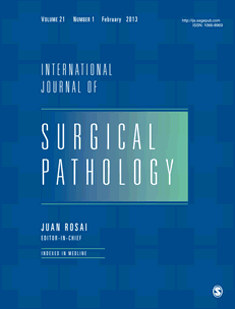
INTERNATIONAL JOURNAL OF SURGICAL PATHOLOGY
Advancing the Frontiers of Surgical DiagnosticsInternational Journal of Surgical Pathology is a distinguished peer-reviewed journal published by SAGE Publications Inc since 1993, specializing in the intricate fields of surgical pathology, anatomy, and surgery. With an ISSN of 1066-8969 and an E-ISSN of 1940-2465, this journal has been at the forefront of disseminating vital research that helps shape clinical practices and understanding in surgical diagnostics. Ranked in the Q2 category for Anatomy and garnering Q3 status in Pathology and Forensic Medicine as well as Surgery, the journal holds a commendable position within its field as reflected by its Scopus ranks. The impact factor underscores its influence and relevance, making it an essential resource for researchers, professionals, and students alike, looking to stay abreast of advancements in surgical pathology. However, please note that the journal does not currently offer open access options. As it converges through the years from 1993 to 2024, the International Journal of Surgical Pathology continues to uphold its commitment to excellence in medical research.

JOURNAL OF COMPARATIVE PATHOLOGY
Innovating Understanding in Veterinary SciencesJOURNAL OF COMPARATIVE PATHOLOGY, published by Elsevier Science Ltd, stands as a significant publication within the fields of pathology and forensic medicine, as well as veterinary studies. With an ISSN of 0021-9975 and an E-ISSN of 1532-3129, this journal has been disseminating critical research since 1950, contributing to the advancement of knowledge through its focus on comparative pathology. The journal's reputable standing is underscored by its Q3 classification in Pathology and Forensic Medicine and Q2 in Veterinary (miscellaneous) for 2023, reflecting its vital role in shaping contemporary discourse in these domains. The Scopus ranks further solidify its presence, placing it at the 51st percentile in general veterinary sciences and the 32nd percentile in pathology—a testament to the quality and relevance of the contributions it publishes. Although it operates under a subscription model, the journal remains accessible to researchers and practitioners who aim to deepen their understanding of pathological phenomena across species, enhance diagnostic accuracy, and improve clinical practices. With a steadfast commitment to rigorous peer review and a global readership, the JOURNAL OF COMPARATIVE PATHOLOGY is an essential resource for those engaged in research and professional practice, fostering collaborations and innovations that bridge complementary areas of study.
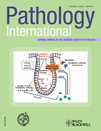
PATHOLOGY INTERNATIONAL
Empowering Clinicians and Researchers with Cutting-Edge KnowledgePATHOLOGY INTERNATIONAL, published by WILEY, stands as a distinguished journal in the field of pathology and forensic medicine, serving as an essential resource for researchers, clinicians, and students alike. With its ISSN 1320-5463 and E-ISSN 1440-1827, PATHOLOGY INTERNATIONAL has established itself since its inception in 1951, navigating through an evolving landscape in medical science with insights and breakthroughs up to 2024. It holds a commendable Q2 ranking in both the Medicine (miscellaneous) and Pathology and Forensic Medicine categories, indicating its robust influence and quality within these fields, as evidenced by its placement in the 70th percentile of Scopus rankings. While currently not an open-access journal, it provides access options that ensure valuable research remains available to the academic community. PATHOLOGY INTERNATIONAL commits to advancing the discipline through pioneering research articles, comprehensive reviews, and expert opinions that push the boundaries of understanding in pathology, thereby supporting the enhancement of diagnostic and therapeutic practices.
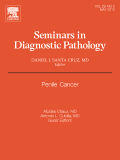
SEMINARS IN DIAGNOSTIC PATHOLOGY
Uncovering insights for a healthier future.Seminars in Diagnostic Pathology is a premier journal that has established itself as an essential resource in the field of pathology since its inception in 1984. Published by W B Saunders Co-Elsevier Inc, this journal boasts an impressive Q1 ranking in the pathology category for 2023, placing it in the top tier of medical journals worldwide. With a focus on diagnostic pathology, it offers a platform for groundbreaking research and advancements that bridge the gap between basic science and clinical practice. The journal is committed to publishing high-quality review articles, case reports, and expert opinions that provide valuable insights for professionals, researchers, and students alike. Although it operates on a subscription model, the journal's extensive impact is reflected in its Scopus rank (#56/208), with a remarkable 73rd percentile standing in the pathology and forensic medicine category. The journal's authoritative content not only aids in enhancing knowledge but also fosters an understanding of the evolving challenges and methodologies in diagnostic pathology, making it an indispensable tool for anyone dedicated to excellence in the field.
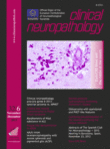
CLINICAL NEUROPATHOLOGY
Transforming neurological research into clinical excellence.CLINICAL NEUROPATHOLOGY is a vital scholarly journal published by DUSTRI-VERLAG DR KARL FEISTLE, specializing in the domains of neurology, pathology, and their clinical applications. Established in 1982 and spanning through to its projected completion in 2024, this journal disseminates high-quality research that significantly contributes to the understanding of neurological disorders and their pathological underpinnings. While the journal currently operates under a traditional access model, its commitment to rigorous peer review ensures the publication of impactful findings, strengthening its foothold in the field, as evidenced by its Q3 quartile rankings in several categories, including Medicine (miscellaneous), Neurology, and Pathology and Forensic Medicine. Those engaged in clinical research and practice will find CLINICAL NEUROPATHOLOGY to be an essential resource for the latest advancements, trends, and discussions that shape the future of neurological pathology.
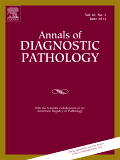
Annals of Diagnostic Pathology
Shaping the Future of Pathology, One Study at a Time.Annals of Diagnostic Pathology, published by Elsevier Science Inc, is a pivotal journal in the field of diagnostic pathology that has significantly contributed to the advancement of medical science since its inception in 1997. With an ISSN of 1092-9134 and E-ISSN of 1532-8198, this esteemed journal is positioned within the Q2 category in both Medicine (miscellaneous) and Pathology and Forensic Medicine, reflecting its high-quality research contributions, showcased by its ranking at #73 out of 208 in Scopus for the latter category. The journal's scope encompasses various aspects of diagnostic pathology, from innovative techniques to critical reviews of pathologic findings, making it an essential resource for researchers, medical professionals, and students dedicated to enhancing diagnostic accuracy and patient care. Although it does not currently offer open access options, its wide readership and impactful publications continue to influence clinical practices and research agendas. With a convergence period extending to 2024, Annals of Diagnostic Pathology remains a leading platform for disseminating valuable knowledge in this dynamic field.

Malaysian Journal of Pathology
Unveiling the intricacies of pathology since 1979.Malaysian Journal of Pathology, published by the MALAYSIAN JOURNAL PATHOLOGY, stands as a pivotal resource in the fields of pathology and medicine, contributing rich insights since its inception in 1979. This peer-reviewed journal, based in Malaysia, is dedicated to disseminating original research, review articles, and case studies that advance the understanding of disease mechanisms and diagnostics. With a current impact factor reflecting its ranked positioning—Q4 in Cell Biology, Q4 in Histology, and Q3 in both Miscellaneous Medicine and Pathology & Forensic Medicine—this journal serves as an essential platform for researchers, clinicians, and students alike. Although it operates without open access, its scholarly rigor and contributions are well recognized, holding ranks such as #84 in Pathology and Forensic Medicine according to Scopus. The Malaysian Journal of Pathology is committed to fostering innovation and excellence in medical research, making it an invaluable tool for professionals seeking to stay abreast of significant advancements in the pathology domain.
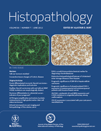
HISTOPATHOLOGY
Championing Rigorous Scholarship in PathologyHISTOPATHOLOGY is a premier scholarly journal published by WILEY, targeting the fields of histology, pathology, and forensic medicine. With an ISSN of 0309-0167 and an E-ISSN of 1365-2559, this esteemed journal has maintained a strong academic presence since its inception in 1977. Boasting an impressive Q1 ranking in crucial categories such as Histology and Pathology, it ranks 13th out of 208 in Pathology and Forensic Medicine, and 5th out of 62 in Histology, reflecting its high impact and relevance within the scientific community. HISTOPATHOLOGY serves as a critical platform for disseminating significant research findings, reviews, and advancements in the diagnostic and therapeutic aspects of pathology. Although it does not operate under an open access model, its rigorous peer-review process ensures that published articles uphold the highest standards of scientific integrity. Scholars and practitioners alike benefit from the insights shared in this journal, as it aims to bridge the gap between laboratory science and clinical practice, fostering innovation and enhancing our understanding of disease mechanisms.

ANNALES DE PATHOLOGIE
Connecting Research and Practice in Forensic MedicineANNALES DE PATHOLOGIE, published by MASSON EDITEUR, stands as a pivotal resource in the field of pathology and forensic medicine, delivering critical insights since its inception in 1981. With an emphasis on advancing understanding and research applications within these domains, the journal is positioned to cater to a diverse audience of researchers, healthcare professionals, and students alike. While currently classified in the Q4 category within the pathway of Pathology and Forensic Medicine, it remains committed to fostering scholarly contributions and innovative research that contribute to the field's growth. Although it does not offer Open Access options, its print and electronic ISSNs (0242-6498 and 2213-008X) ensure availability for readership across global institutions. The Scopus ranking highlights its niche relevance, with a current rank of #189 out of 208 in its category, indicating a promising trajectory for future research endeavors. Published in France, ANNALES DE PATHOLOGIE invites contributions that engage the academic community and advance knowledge in pathology's most pressing matters.
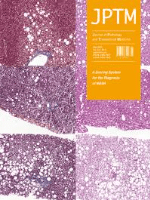
Journal of Pathology and Translational Medicine
Fostering Collaboration in Pathology and HistologyThe Journal of Pathology and Translational Medicine, published by the Korean Society of Pathologists, is a distinguished peer-reviewed Open Access journal that has been at the forefront of advancing the field of pathology and histology since its inception in 1985. With an established ISSN of 2383-7837 and an E-ISSN of 2383-7845, the journal serves as a vital platform for disseminating high-quality research, fostering collaboration among professionals and offering valuable insights into both clinical applications and theoretical advancements. Recognized for its influence in the field, it holds a commendable Q2 ranking in both Histology and Pathology & Forensic Medicine categories in 2023, and ranks #52/208 in Scopus for Medicine – Pathology and Forensic Medicine, demonstrating its impact and reach within the academic community. Located in South Korea at 1209 Gwanghwamun Officia, 92 Saemunan-ro, Jongno-gu, Seoul 03186, this journal not only caters to researchers and professionals but also supports students striving to deepen their understanding of pathology. Join the growing body of knowledge and stay updated with the latest findings in this essential field of study through the journal's open access format, promoting worldwide accessibility and engagement.